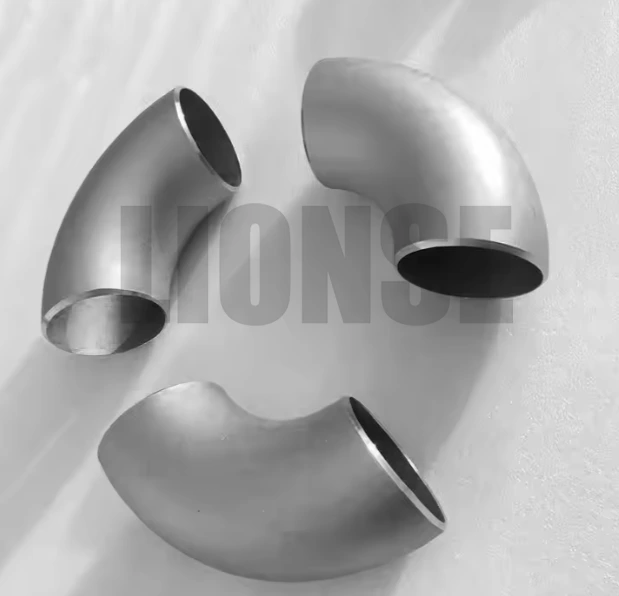

The manufacturing of titanium short-radius elbows requires a complex and specialized process, including material selection, cutting, forming, heat treatment, processing, inspection and packaging.
This process requires skilled and experienced workers and employs cutting-edge equipment and technology to ensure the production of high-quality elbows that meet industry standards. The first step in manufacturing titanium short-radius elbows is to select high-quality raw materials. The materials are usually in the form of titanium seamless tubes and have been carefully inspected to ensure compliance with international and industry standards.
The next step is to use a saw or a special cutting machine to cut the titanium seamless tube into a specific length. Then reshape the cut piece into the required elbow shape.

The forming process involves using machines and heating systems to bend the cut pieces into the required elbow shapes. The forming process takes into account factors such as the thickness of the pipe, the diameter of the elbow and the bending Angle. This process is carried out by highly skilled workers who use the correct techniques to ensure that the elbows have the highest quality and meet the required dimensional tolerances.
After the forming process, the elbow undergoes heat treatment. The main purpose of heat treatment is to improve the overall mechanical properties of titanium short-radius elbows. The heat treatment process is carried out in a specialized furnace or oven, and the temperature and duration are carefully monitored.
Then, mechanical processing is carried out, and the elbow is further refined to ensure that it meets the required specifications. Processing may involve cutting, grinding or drilling, and this process aims to optimize the surface finish, dimensional accuracy and mechanical strength of the elbow.
After the manufacturing process is completed, titanium short-radius elbows will be inspected to ensure they meet industry standards. The inspection process involves a series of testing techniques, such as visual inspection, ultrasonic testing, magnetic particle inspection, radiography and dye penetration testing.